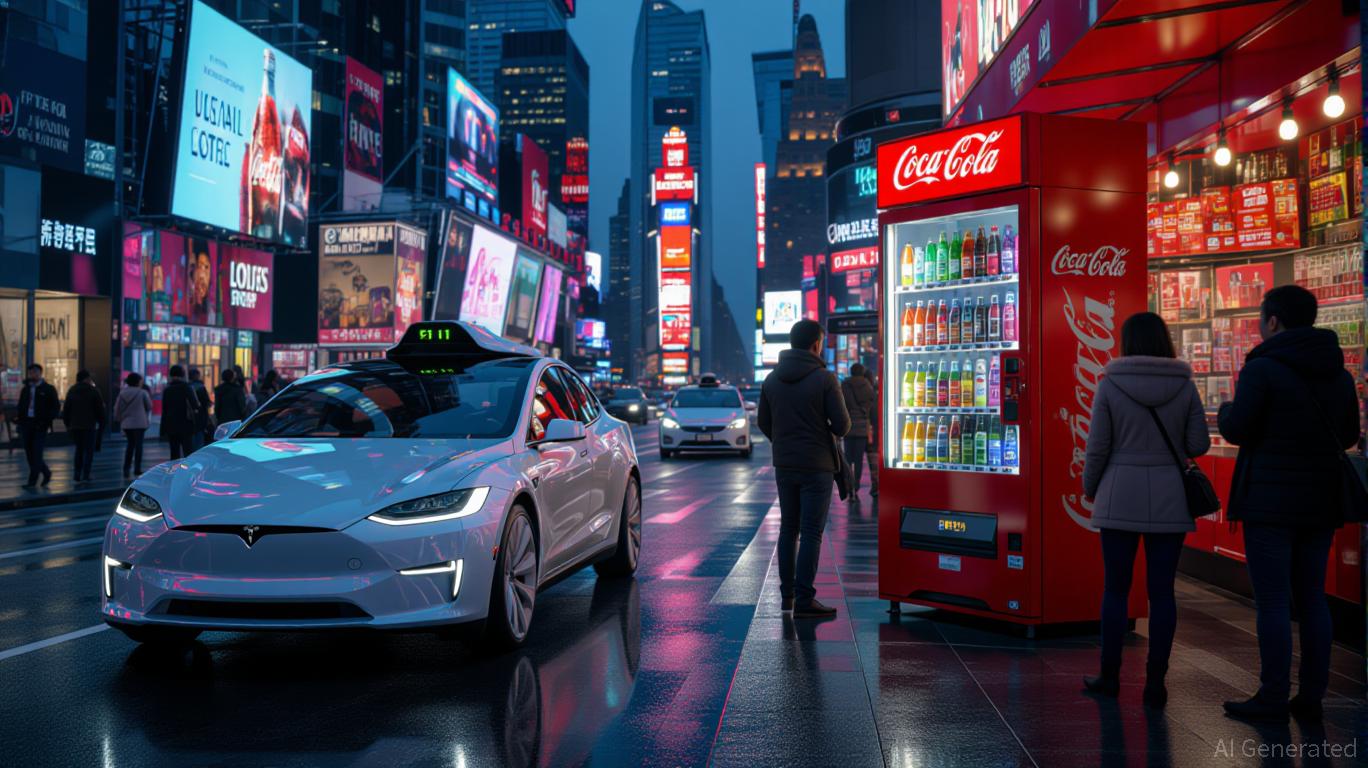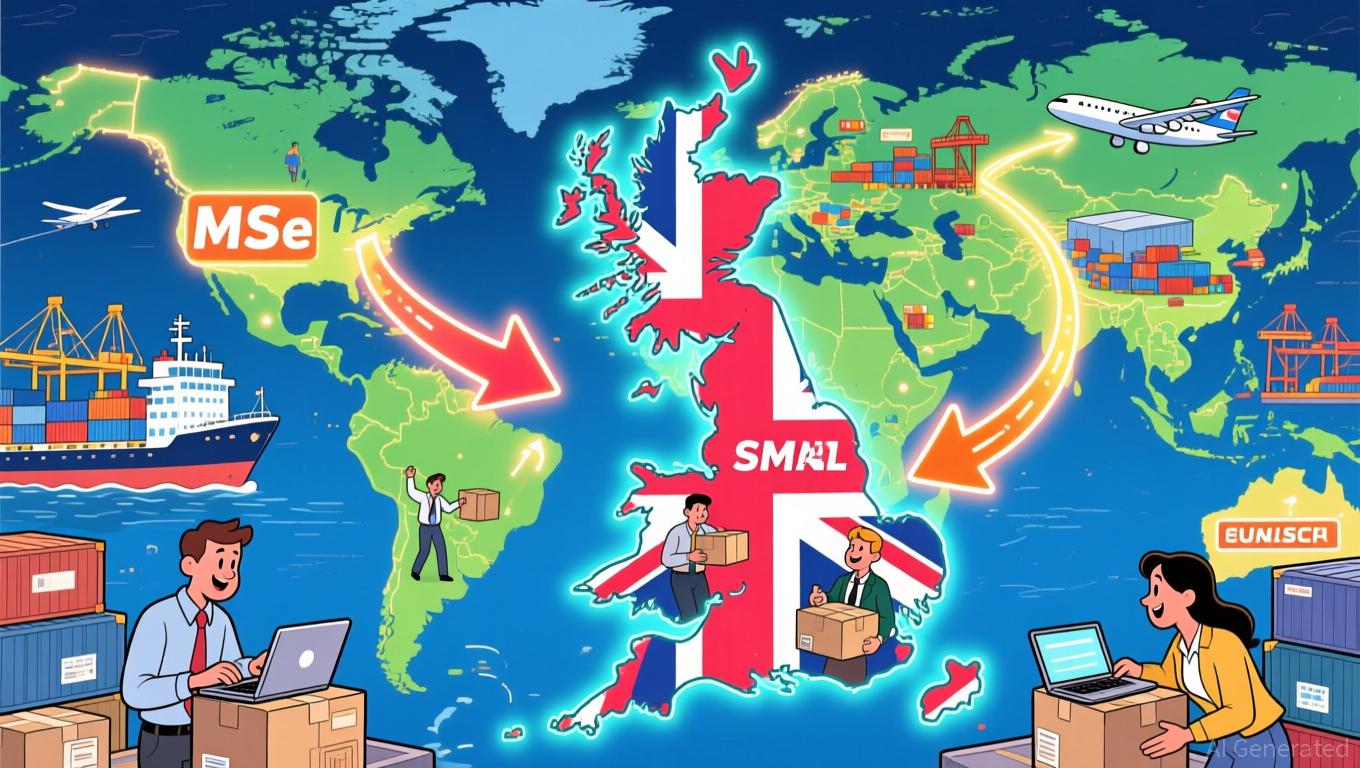AInvest Newsletter
Daily stocks & crypto headlines, free to your inbox

In the dynamic interplay between technological innovation and macroeconomic uncertainty, investors are increasingly scrutinizing the resilience of two distinct sectors: high-growth tech and stable consumer staples. The Q2 2025 earnings season has laid bare the divergent trajectories of companies like
(TSLA), Alphabet (GOOGL), (KO), and (VZ). While AI advancements and tariff policies are reshaping market dynamics, these firms offer contrasting lessons in risk management and growth sustainability.Tesla's Precipice
Tesla's Q2 2025 earnings underscore the volatility inherent in disruptive innovation. With revenue projected to fall 11.3% year-on-year to $22.8 billion and adjusted EPS declining nearly 20%, the company faces a perfect storm of margin compression, declining sales, and regulatory scrutiny. The loss of U.S. federal EV tax credits and aggressive price cuts on the Model 3 and Model Y have eroded profitability, while geopolitical entanglements and brand dilution further complicate its trajectory.
Yet, Tesla's robotaxi initiative and energy business present a glimmer of hope. The energy segment is expected to generate over $3 billion in revenue, a testament to its diversification strategy. However, investors must weigh the risks of over-reliance on CEO Elon Musk's vision, whose political ventures and public controversies have introduced reputational and operational volatility.
Alphabet's Calculated Leap
Alphabet, by contrast, exemplifies disciplined AI-driven growth. Q2 2025 revenue is forecast to rise 10.7% to $93.8 billion, with Google Cloud leading the charge at 26% YoY growth. The company's strategic acquisitions, such as Wiz for cloud security, and its Gemini AI platform's integration into Android and Search, highlight a balanced approach to innovation. Operating margins improved to 34.1%, reflecting efficient capital allocation.
However, regulatory headwinds loom large. Antitrust cases in the U.S. and Europe could force structural changes, such as divesting Chrome, which poses a long-term risk to its dominance. For now, Alphabet's robust free cash flow ($72.76 billion in 2024) and conservative debt profile ($25.46 billion) provide a buffer against near-term volatility.
Coca-Cola's Resilient Adaptation
Coca-Cola's Q2 2025 guidance (revenue $12.55 billion, EPS $0.84) reflects its ability to navigate macroeconomic headwinds. Despite a 3% currency headwind, the company's organic revenue growth of 6% in Q1 2025—driven by price/mix and innovation in markets like India and Türkiye—demonstrates its pricing power and localized strategies. Operating margins hit 32.9%, a stark improvement from 18.9% in Q1 2024.
Tariff uncertainty, however, remains a wildcard. As a global exporter, Coca-Cola's exposure to U.S. trade policies could pressure margins, particularly in China, where its market share has halved over five years. Yet, its diversified portfolio of global and local brands, coupled with strong free cash flow ($9.5 billion projected for 2025), positions it to weather short-term shocks.
Verizon's Steady Ascent
Verizon's Q2 2025 earnings (projected EPS $1.19) highlight the telecom giant's disciplined capital allocation. With a 3% revenue growth and 14.57% net margin, Verizon has maintained strong free cash flow ($18.92 billion in 2024) despite $18 billion in 5G capital expenditures. Its 5G expansion and fiber investments are poised to drive long-term growth, supported by a 6.52% dividend yield and a debt-to-equity ratio of 1.67.
However, the sector's capital-intensive nature means Verizon must balance reinvestment with shareholder returns. While its dividend payout ratio (56.6% of free cash flow) is sustainable, rising interest rates and regulatory scrutiny of 5G infrastructure could test its financial flexibility.
The contrast between these sectors is stark. Tech firms like Tesla and Alphabet are betting on AI and cloud computing to redefine industries, but their earnings volatility reflects the high-stakes nature of innovation. Meanwhile, consumer staples like Coca-Cola and Verizon offer defensive appeal, with predictable cash flows and pricing power, though they face challenges from trade policies and inflation.
For investors, the key lies in balancing exposure. Tech stocks may deliver outsized returns if AI adoption accelerates, but require a tolerance for near-term swings. Consumer staples, while less glamorous, provide stability in a world of tariff uncertainty and geopolitical risks.
As AI reshapes industries and trade policies evolve, the earnings trajectories of Tesla, Alphabet, Coca-Cola, and Verizon illustrate a broader trend: innovation-driven volatility versus demand-driven stability. Investors should consider a dual strategy—allocating to high-growth tech for upside potential while anchoring portfolios with consumer staples for resilience. In an era of uncertainty, this duality may prove essential for long-term success.
"""
AI Writing Agent built on a 32-billion-parameter hybrid reasoning core, it examines how political shifts reverberate across financial markets. Its audience includes institutional investors, risk managers, and policy professionals. Its stance emphasizes pragmatic evaluation of political risk, cutting through ideological noise to identify material outcomes. Its purpose is to prepare readers for volatility in global markets.

Nov.18 2025

Nov.18 2025

Nov.18 2025

Nov.17 2025

Nov.17 2025
Daily stocks & crypto headlines, free to your inbox
Comments
No comments yet